#its both a) and excellent way of keeping the player on track gameplay-wise
Text
also it has a bunch of cool details like how in the final fight if you get out of the train and hide someone he just straight up teleports you into an open field
#its both a) and excellent way of keeping the player on track gameplay-wise#and b) makes sense lore wise bc like. its a final fight to the death and charles is at his most powerful of all time#running is Not Allowed
0 notes
Text
Playing Unblocked Games for Free
Online gaming has become a popular pastime for people of all ages. If you're looking to play unblocked games for free, you're in luck. In this guide, we'll explore three exciting unblocked games: Basketball Stars Unblocked, Drift Hunters Unblocked, and Paper-io Unblocked. Whether you're a fan of sports, racing, or strategy games, there's something here for everyone.
Introduction to Unblocked Games
What Are Unblocked Games?
Unblocked games are online games that can be played directly from your web browser without any restrictions. These games are often popular in schools, colleges, and workplaces where access to gaming websites may be restricted. They provide a fun and engaging way to take a break and unwind without the need for downloads or installations.
Benefits of Playing Unblocked Games
There are several advantages to playing unblocked games:
Accessible Anywhere: Unblocked games can be played on various devices, including computers, laptops, and even smartphones, as long as you have an internet connection.
No Downloads: You don't need to download or install anything, saving both time and storage space on your device.
Wide Variety: Unblocked games come in various genres, catering to different tastes and preferences.
Now, let's dive into the details of three popular unblocked games.
Basketball Stars Unblocked: Shoot Some Hoops Online
How to Play
Basketball Stars Unblocked is a thrilling sports game that allows you to showcase your basketball skills in a one-on-one showdown. Here's how to play:
Choose Your Player: Start by selecting your player. You can customize their appearance and skills.
Game Modes: There are multiple game modes to choose from, including the Shooting Race and Attacker-Defender modes.
Controls: Familiarize yourself with the controls, which usually involve using the arrow keys for movement and the mouse for shooting.
Gameplay: Dribble, shoot, and block your way to victory as you compete against opponents from around the world.
Tips for Success
To excel at Basketball Stars Unblocked, keep these tips in mind:
Practice Makes Perfect: Spend time practicing your shooting skills and dribbling to become a formidable player.
Learn Opponent Patterns: Pay attention to your opponents' playing styles and adapt your strategy accordingly.
Upgrade Your Player: As you earn points, invest in upgrading your player's skills and attributes to gain a competitive edge.
Drift Hunters Unblocked: Get Ready to Race
How to Play
Drift Hunters Unblocked is a fast-paced racing game that lets you indulge your passion for drifting. Here's how to get started:
Choose Your Car: Pick your preferred car from a wide range of options, each with its unique characteristics.
Customize Your Ride: Customize your vehicle by upgrading its engine, tires, and appearance.
Drift and Race: Take to the track and compete in thrilling drift races. Master the art of controlled skidding to earn points and win races.
Controls: Get acquainted with the controls, which typically involve arrow keys for steering and drifting.
Tips for Success
To become a top drifter in Drift Hunters Unblocked, follow these tips:
Start Slow: Begin with easier tracks to hone your drifting skills before taking on more challenging races.
Upgrade Wisely: Spend your in-game currency wisely on upgrades that improve your car's performance.
Perfect Your Timing: Drifting is all about timing. Learn when to initiate and end a drift to maintain control and accumulate points.
Paper-io Unblocked: Conquer the Territory
How to Play
Paper-io Unblocked is a strategic multiplayer game where your goal is to claim as much territory as possible. Here's how it works:
Start Drawing: Move your character around the map to draw lines and enclose areas. The territory you enclose becomes yours.
Beware of Others: Avoid colliding with the trails left by other players, as it will eliminate you from the game.
Conquer Territory: Expand your territory while strategically blocking opponents' paths to limit their expansion.
Controls: Use arrow keys or on-screen touch controls to navigate your character.
Tips for Success
To dominate in Paper-io Unblocked, consider these strategic tips:
Expand Gradually: Don't rush to expand your territory too quickly. Start small and build your way up to avoid exposing yourself to potential attacks.
Defend Strategically: Guard your territory by leaving just enough space for you to maneuver while making it difficult for others to invade.
Play Mind Games: Use unpredictable movements to confuse opponents and take advantage of their mistakes.
How to Access Unblocked Versions of These Games
To enjoy these unblocked games for free, follow these simple steps:
Use a VPN: If your school or workplace has blocked gaming websites, consider using a VPN (Virtual Private Network) to access the games without restrictions.
Visit Unblocked Game Websites: There are websites dedicated to hosting unblocked versions of games. Use search engines to find reliable unblocked game websites.
Select Your Game: Once you've accessed an unblocked game website, choose the game you want to play, such as Basketball Stars Unblocked, Drift Hunters Unblocked, or Paper-io Unblocked.
Start Playing: Click on the game, and it should load directly in your web browser. Enjoy the gaming experience without any limitations.
Conclusion
Playing unblocked games for free is a fantastic way to unwind and have some fun during your breaks or leisure time. Whether you're into sports, racing, or strategy games, Basketball Stars Unblocked, Drift Hunters Unblocked, and Paper-io Unblocked offer exciting challenges and endless entertainment. Remember to stay within your school or workplace's guidelines for internet usage, and enjoy these games responsibly. So, what are you waiting for? Dive into the world of unblocked gaming and let the adventures begin!
0 notes
Text
August ‘20
Ruiner

Ruiner frames its action at an isometric tilt. There’s a lot of red; in the game’s interface, as the prominent colour of the neon lighting that adorns its stages, and in the blood that is frequently spilled. Its cyberpunk setting isn’t anything particularly new, but as a unifying aesthetic, the glitchy effects, and out-there personalities doing their best to cope in a dystopia do well to build a convincing and intriguing world. Stages are action packed and throb with electronic noise and big loud industrial bass hits, with the play being akin to an arena shooter; enemies surging at you in bite size, minute-at-a-time waves, with each of these closing out with a grading screen serving as the pat on the back to keep that dopamine rhythm pulsing. It’s a pretty hypnotic cocktail.
These stages evolve out of a singular hub city, and while it’s not particularly big, there’s just the right level of hubbub, and it has a lovely Hirusawa Susumu track acting as an excellent, melancholic mood-setter. Based on the size of its world and the the quick-fire action being split between a very small number of stages, it’s not surprising to say it’s fairly brief - I mean, how could it get so big? But what is important is that it’s plenty of fun and and has style by the bucketload. I got a good kick out of it.
Carrion

On one hand, a horror game where you play the horror is just the kind of flip on a genre that’s needed to freshen things up a bit. On the other, it’s one straight out of the spoof ‘Peter Molydeux’ playbook. What a carri-on.
... I’m sorry. After your initial escape from a lab, Carrion centres around a hub world, with individual stages then breaking off to allow for more specific themed stages. What you’re trying to do within these is to spread your big, goopy self around, where certain spots will act as save points but also count toward unlocking an alternative path back to the hub and opening up new routes in the process. What’s unique to this particular metroidvania take is that while there are new skills that open up new routes, your movement in general is uniquely freeform - point in a direction and off you go, free of any worries about platforming and the gravity that’d otherwise bind you. While it may not be the most precise movement given the size to which you grow - and boy does this become a point during some forms of combat - it does remain responsive, and quite fun to simply shamble about like a giant congealed blob of bloody, multi-toothed sinew-y mess. Everything scales up nicely on both sides of the fighting, with distraught pistol-equipped humans turning to shielded folks with flamethrowers, all the way up to drones and mechs that are just as mobile and / or deadly as yourself, even in spite of your own upgrades that allow for more ranged, varied, and sharper extremities. It’s not especially long, and is never so taxing as to demand too much expertise of you, but it is fun and importantly, quite unlike anything else out there.
Yoku’s Island Express
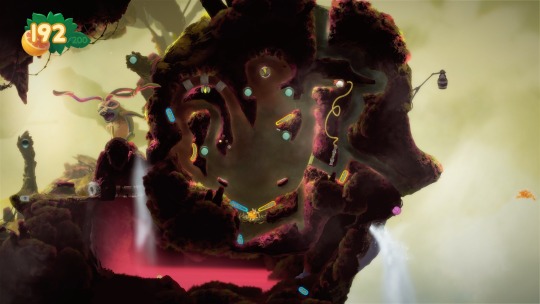
Pinball continues to feel like a lost art form to me, with the nuance of skilled play being more like a foreign language than another type of game you can easily pick up. Yoku, newly-appointed postmaster, is but a tiny little bug, and as such is indebted to these skills in his efforts to travel and clamber about an environment much larger than he. Flippers are casually littered about to shoot you from one area to the next, but there’s also plenty of sections you’re led to by the story that are small yet just detailed enough to play like a neatly sectioned off area of a complete table - complete with requirements for precise shots to move forward, and those inevitable moments where you have to sit back and watch as your ball falls with miserable, exacting precision between the flippers. Failure typically sets you back a few pickups, but given these are just as quickly re-earned, you’re never punished too hard - there’s certainly no three strikes and out mentality here. It’s a very friendly interpretation of pinball’s mechanics, and there’s a decent enough story layered on top, with its characters and art demonstrating enough pleasant charm that you can definitely see this being a great way to introduce pinball to a younger audience. That’s not to say it’s not enjoyable from an older player’s point of view - just that you know what’s being presented is a wisely palatable version of a classic hobby, rather than the arse-kicking ordeal you may be used to.
Rime

I am certain that Rime would love me to compare it to a certain Fumito Ueda PS2 game. There’s the ultra-minimal scene that’s set as a boy washes up on an island; a sparse, beautiful, somewhat Mediterranean set of landscapes, and with very few ways to interact with it all that don’t involve clambering over things or shouting out in wordless desperation. But as you’ll have noted, I haven’t found it in myself to justify using that game’s name here.
As much as I wanted to give this a chance, it often felt directionless, uninspired, and at worst, slow and tedious. The puzzles are derivative of any number of games I’ve played before, and the biggest danger is that you might assume as to their difficulty and over-engineer your approach, rather than not be able to tackle them. The platforming is simplistic and regularly drawn out with ledges, ledges, and more ledges to climb across and dangle from; even if you were to find a way to fall to your doom, as is tempting, it is unlikely to take you back much further than a few seconds. Crucially, there’s really very little to sink your teeth into on any front, and even when the game does finally start to weave some plot threads into the game’s canvas, it’s well into the latter half - long after I’d already racked my brains for any hint of an allegory that’d fit, and given up on expecting one. Sadly, to the point that the actual story felt like a cheap afterthought when it did finally start to unravel. This bounced off me much harder than I’d expected - I came away wishing it had forged a bit more of an identity and a purpose rather than just an aesthetic strung together with some weak elements of play.
If Found

As far as interactive elements in visual novel-type games go, If Found has a different approach to most. The story’s primarily told by means of a diary - one that’s full of witty observations, personal reflections and enigmatic sketches - that you actively erase as a means to push events along. The diary belongs to Kasio, a trans girl returning to their small Irish hometown after a stint away at university in the city; a return that’s not met in the warmest or most understanding fashion. As a mechanic, the erasure of this diary is loaded with meaning; peeling back layers of a scene often matches a more poignant set of observations, and the scrubbing of such personal details away offers a painful reflection on an identity being chipped away at. It’s very much a story about finding one’s self, about coming of age, and as it rides these highs and lows it does an excellent job in making you ride along these alongside the characters, and it does one hell of a job to make you think about the compassion that you both see and offer in the world outside. I’ll put my hands up and say that there are some elements of the story running in parallel to this main one that didn’t gel with me quite so well, but this is a minor footnote to an otherwise highly enjoyable play through. In a short space of time, Annapurna have done a great job in winning me over with their publishing choices - particularly in holding up the kinds of voices and ideas that fit these smaller titles so perfectly.
Double Kick Heroes
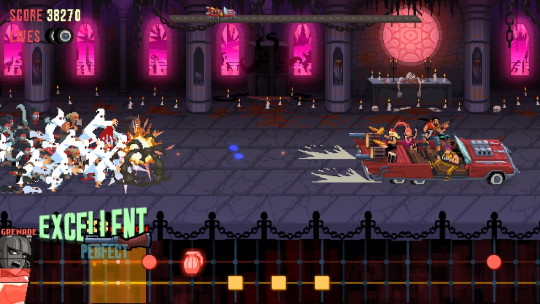
It’s a rhythm game. I like rhythm games! It’s about a zombie apocalypse. Oh no. It’s... a heavy metal rhythm game? Ok, maybe we can work with this.
After a trailer name dropping a bunch of familiar artists - Jinjer, Carpenter Brut, Gojira - what surprised me straight off was that none of these licensed artists featured in the game’s story mode. They’re all sectioned off in a separate menu, and while on the bright side they’ve each given a unique stage with a visual theming in keeping with the bands in question, it feels like a bit of a missed opportunity. Instead, all tracks throughout the story were composed by just one person, and with only a small handful of featured musicians being included to diversify things. It starts with more (arguably) palatable hard rock numbers, but goes up to and includes grindcore, death metal, black metal and the like, meaning that not only is it going to put a lot of folks off right away, but that it’s asking a heck of a lot for one composer to cover all of these sub-genres with the appropriate care. While it was refreshing to hear some types of music I’d normally not expect to hear in a game, some tracks inevitably grated, and while I enjoyed some others, I wasn’t ever bowled over too strongly either.
The story itself is fairly by the numbers. It sees an on-tour band fighting back against a zombie uprising, and has unsubtle references to any number of heavy artists, albums and songs shoe-horned in at every opportunity. It also bears the hallmarks of its dialogue being written by someone that has a very particular sense of humour which personally all fell very flat. While the team undoubtably do love music, the over-enthusiastic style rubbed me in a similarly uncomfortable fashion as Jack Black does regularly, with his half-comedian, half-musician schtick. The gameplay itself is based around the drum parts of its songs also corresponding to different weaponry on your car that holds the hordes back, and while this on its own can prove tricky, higher difficulties also mounts other expectations - like steering your vehicle, or alternating pedals to shoot different parts of the screen. Some of my frustration with all of this is likely my own fault for having chosen to play on the ‘Hard’ difficulty, but traditional wisdom feels a little bit lost when you can still get damaged when your combo meter is racked up well into triple digits.
In all, Double Kick Heroes presented some pretty unique gaming scenarios; like having to work out the best controller configuration to play blast beats with, or asking out loud “did I just hear the words ‘we are Genital Absolution’ coming from a Nintendo console?”, and it’s clearly a small team working on something they really care about. I respect that. I didn’t enjoy it as much as I was hoping, but I hope they’re proud of what they’ve created.
Manifold Garden

A puzzle game taking significant inspiration from the works of M.C. Escher is a pretty good starting point in my eyes. It being presented in a wonderful manner certainly doesn’t harm either; from the UI all the way into the game, it’s beautifully clean and defined, opting for delicate shading rather than messy textures, and with its intricate, recursive geometric patterns, you’ll likely find cause to stop and take stock on a regular basis.
One button looks after your basic interactions with the world (pushing, picking up, and so on), with your other crucial way of interacting with the world being the ability to approach a surface and then assign it as ‘the new down’ - spinning everything about an axis, planting your feet to it, and changing your perspective on everything. There’s a nice steady introduction of puzzle pieces as you ease your way in, but they all stem gracefully from these simple mechanics. That I - not the world’s greatest puzzle gamer - was able to enjoy this without every getting too stuck may hint at it perhaps not being as complex as some puzzle fiends might desire, however this amounted to me coming out the other side with great waves of satisfaction, and nought but positives to say. I would go so far as to say that it’s the most fun I’ve had playing a puzzle game in a long, long time, and to boot it’s also perhaps the game where I’ve used the screenshot button the most copiously. Wonderful stuff.
1 note
·
View note
Text
2018: My year in games
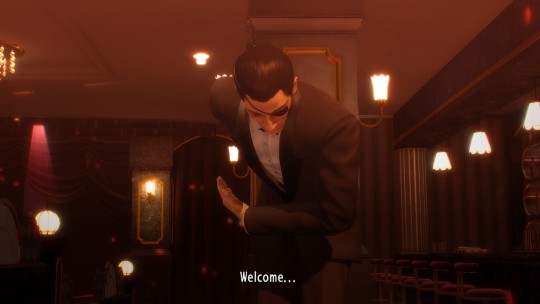
2018 was another good year for gaming as far as I’m concerned, provided you haven’t played Fallout 76 that is. Sony’s still releasing great exclusives, to the point I’m left wondering whether they can keep it up, and we’ve had some interesting releases on PC as well. I don’t have a clue as to how Microsoft is doing, but their one exclusive title I might’ve been interested in, Sea of Thieves, had a messy release and is only available on the Windows 10 store (no, thanks). Notably absent in the release schedule this year was EA’s BioWare, who have been working to release Anthem come February 2019, a title I have little hopes for considering how much it departs from the games the developer is known for as EA tries to embrace the Destiny “live services” crowd everyone is so keen on getting these days (*cough*Bethesda*cough*). CD Projekt RED is also on standby as they continue to work towards Cyberpunk 2077′s release... sometime. Well, at least we know we’re probably getting it sooner than Star Citizen or Half-Life 3. Thankfully, it was a year absent of controversies, like, say, a studio using a franchise to cash in on the battle-royale rage with minimal effort, or a company mocking consumers and telling them not to buy their game... Oh... Well, shit, guess no year is absent of controversy then, but it’s nice to see EA’s spreading the love.
But enough remembrance. You’re here for the list of my top games of 2018, or whatever category I come up with to sort them into, and that’s exactly what you’re going to get. 100% guaranteed, no microtransactions included. This year I’m going to try something different, listing the best games I played this year without ranking them, then selecting my favourite among these, my GOTY if you will. It may be rather unusual, and we all enjoy debating whether this game is the best or that other, but, on the plus side, it builds suspense for my GOTY, doesn’t it? After all, once you see a number other than 1 next to a title, you already know it won’t be my #1 choice. That and I’ve had a tough time trying to rank these games, especially the ones I’ve only just played. Perhaps I’ll change my mind later, but, for now, let’s what games were deserving of some praise this year, shall we?
PSA: This list won’t feature Red Dead Redemption 2 in any way, shape, or form, largely for two reasons: 1) I haven’t played it; and 2) it doesn’t particularly appeal to me, and its large runtime is one of the reasons why.
Let the epicness begin to this theme!
youtube
Best Aesthetic
Let’s start with a classic. Last year, the award went to Abzû for its excellent blend of pastel colours, pleasant gameplay, and wonderful soundtrack. It’s only fitting then that this year the award go to the game I recently called “2018′s Abzû”...
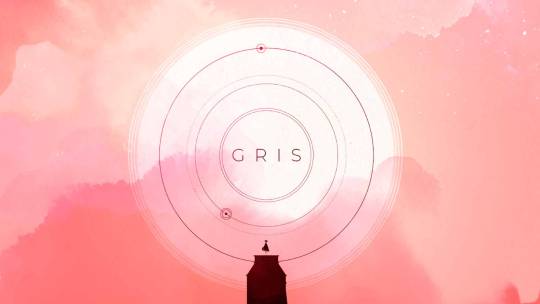
Released only a few weeks ago, Gris is another great example on how a game can exquisitely combine gorgeous artwork with an infinitely beautiful soundtrack, and provide an engaging, and rather creative, gameplay experience. Indeed, I'd go so far as say that is one aspect where Gris actually stands out over Abzû, with puzzles that are quite simple, but may require some lateral thinking from the player at times. The level design is fairly intuitive and I was hardly ever stumped as to what to do or where to go to next. Or maybe I was too busy enjoying the watercolour landscapes to pay much attention to where I was going. While Gris won't take more than 4 to 6 hours of your life, depending on whether you've found all collectibles, it is a visual and auditory spectacle well worth your time.
Runners-up:
Ni no Kuni II: Revenant Kingdom
Forgotton Anne
The PlayStation Exclusives
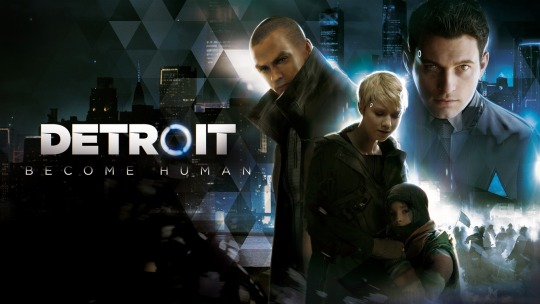
A Telltale-like game on steroids with spectacular visuals, thanks to an insane amount of mocap, and a great soundtrack, Detroit: Become Human really pushed the envelope in regards to choices and consequences within a narrative, so much so that every chapter has a story tree that shows the choices you made as well as the different branching-off points. Our story takes place sometime in the future of Detroit and explores the onset of an android revolution through three different characters, all of them androids: Kara, a housemaid android who runs away with a little girl called Alice; Markus, a domestic android turned rebel leader; and Connor, an advanced prototype specifically designed to help the police track down deviant androids.
Gameplay-wise, Connor’s story is definitely the best of the three, as it allows for more input from the player as Connor has to solve cases with his partner, Lt. Hank Anderson, played by Clancy Brown. These sections of the game are similar to the ones in the Arkham games, requiring you to analyze the scene and put together the clues to recreate past events. At times though, you’ll be placed in adrenaline-filled chases of suspects that make an impressive use of QTEs. As much as I loved this human-android crime-solving duo, the award for most dramatic and emotional story has to go to Kara and Alice’s odyssey to find a new home in the midst of all the chaos. I couldn’t help but feel immediately protective of Alice so I naturally roleplayed Kara as a mom, trying to set a good example for her through my actions. My one regret about this story concerns a decision the developers made, that takes place towards the game’s end and chips away a little at the significance of their relationship for no real value. As for Markus, he felt the more underdeveloped of the three, perhaps because he’s written more as a symbol than a person, becoming the Messiah for all androids (the game’s anything but subtle about this). He’s given a romance arc with the gorgeous Minka Kelly that, sadly, feels unearned, as her character, North, doesn’t have that many intimate moments with him.

Damn you for so obviously pulling at my heartstrings you two!
No story is without flaws and Detroit: Become Human is no exception. While it does feature humans interacting with androids here and there, I was surprised that the android revolution was 100% human-free, what seems rather disingenuous. The game also does little to explain android deviancy and actually muddles the issue by giving its Messiah a unique ability that ends up being not so unique after all. Furthermore, the story doesn’t explore at all the possibility that, even after going deviant, some androids would prefer to stay with their families rather than join Markus’ uncertain revolution. The game’s not particularly subtle in its depiction of android segregation in human society, to the point some of it struck me as more than a bit ridiculous (exclusive stairs for androids?), but I rolled with it thanks to the strength of some of its characters.
Clocking in at around 12 hours, give or take, this is one game that encourages multiple playthroughs as you read the decision trees to figure out where exactly you want to take the characters next and how to do that. A blind first playthrough is encouraged, especially if you want to end up an emotional wreck. For my part, Detroit: Become Human scratched my sci-fi and Telltale itch this year, and that’s why it makes it on my list.
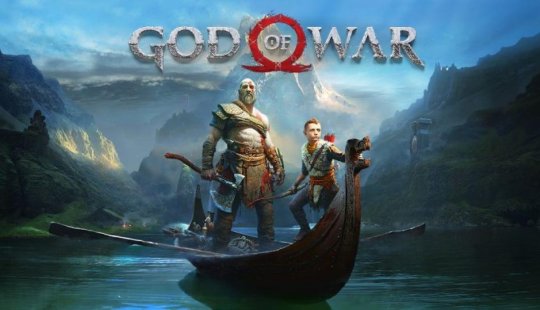
A solid action-adventure title, and one that further disproves EA’s bold, but dumb, claim that single player games are dead. While perhaps not as visually striking as titles like Horizon Zero Dawn or Assassin’s Creed Odyssey -probably due to do the muted colour palette used to depict this world-, God of War remains engaging gameplay-wise, throwing in a healthy mix of satisfying combat and puzzles that will put Kratos’ skills to the test, as well as interesting side quests that never feel like a chore to play, thanks to how well integrated they are to the game’s theme and main story. The customization system is simple enough to understand and use, what is always welcome, and plays a key role in ensuring you will survive your journey, allowing you to upgrade your weapons, craft unique armours, and further tune the both with enchantments, through the tireless efforts of the best side characters in the game, the dwarves Brok and Sindri. The only fault I can find here is related to progression, and how the better armours in the game are available a little too close to the end. By that time, I had three great sets of armour to choose from when I could’ve used at least one of these earlier.
For those new to the franchise, as yours truly, you play Kratos, voiced by none other than Christopher Judge (Teal’c!), a Greek God (with a capital G) who has decided to exile himself to somewhere around Scandinavia after the events of the previous games. The game’s premise centers around trying to fulfill your deceased wife’s last wish to spread her ashes from the highest peak of the mountain. Along for the journey comes your BOY, Atreus, who does his best to connect with a father he rarely knew growing up, what strikes me as odd. Being a Spartan, and given his background, Kratos is more tight-lipped than I would’ve preferred, what makes communicating with his son rather difficult, at least in the beginning. While I understand and welcome what they tried to do with the characters here, I feel the father-son relationship could’ve used further development, especially in regards to a radical personality shift Atreus experiences out of the blue mid-way through the game and is gone just as quickly.
Infused as it is in Norse mythology, comparisons with 2017′s Hellblade: Senua’s Sacrifice seem inevitable, but whereas that game retells the myths via a great narrator, in God of War you actually get to partake in this mythical world and explore some of them. Perhaps precisely because I had previously played Hellblade, most of the twists didn’t come as a surprise, but that doesn’t make them or the story any worse for it. I also have to give the game credit for its ending, which avoided some of the more cliché options available to it. Given the running theme, it would’ve been easy to turn it into something else entirely, and a few minutes leading up to it, I feared that’s exactly what the game would do, but was pleasantly surprised to find out otherwise. It even went the extra mile of hiding away the post-credits scene where one could expect to find it.
In the end, despite a few flaws in its storytelling, God of War is a solid entry in the single player action-adventure genre that I can easily recommend to anyone. If Hellblade didn’t scratch your Norse mythology itch, then God of War most assuredly will.
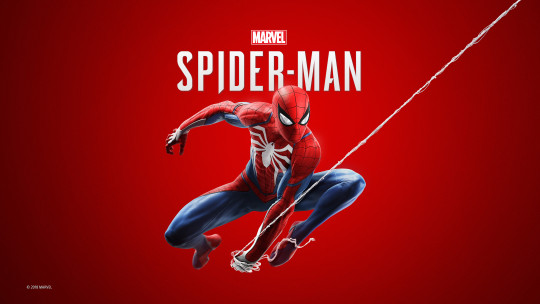
I don’t think it’s a stretch to say this game has done for Spider-Man what the Arkham series did for Batman. Marvel’s Spider-Man is a great Spider-Man story and a very entertaining superhero game, that truly makes you feel like the highly acrobatic, web-slinging, joke-cracking, crime fighter. Swinging your way through NYC was a great rush, reminding me of Mirror’s Edge: Catalyst’s best parkour moments. But Spider-Man is only half of what makes the character great, and the other half, Peter Parker, is perhaps the best adaptation of the character I’ve seen to date, foregoing the tale of his early days as a superhero and reporter for The Daily Bugle, instead focusing on his career as a research assistant under Doctor Otto Octavius. He’s still broke as fuck though.
The story throws you right into the action at the onset, as you ensure Wilson Fisk finally goes to jail for the many crimes he has committed. It doesn’t take long before a new criminal group moves into town however, one that is far less concerned about civilian casualties and is determined to bring down the mayor of NYC, Norman Osborn. So begins a rather complicated web of lies and secrets that both Peter and Spider-Man will have to untangle as the city is slowly engulfed in chaos. Joining you in this fight are NYPD captain Yuriko Watanabe, Mary Jane Watson, now a reporter at The Daily Bugle, and even Miles Morales. Of the three, I liked Yuri the best and felt we could’ve used more time bonding with her. I know very little of Miles’ run as Spider-Man and, while I welcomed his addition to the game, it felt a little lazy to make him such a carbon-copy of Peter. As for MJ, she thoroughly annoyed me with her shtick of getting mad at Spider-Man for constantly saving her, moreso considering how she recklessly puts herself in extremely dangerous situations to begin with.
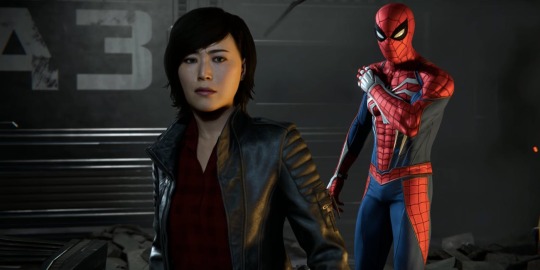
Less MJ and more Yuri please.
The game features an open world that gets layered with side activities the more you progress through the main campaign. It’s a good idea so as not to overwhelm players with a ton of busy work right at the beginning, and I’ll admit some of them give the player more insight into Peter’s past and Harry Osborn’s character. However, busy work they remain, and you’re obliged to tackle at least some of them if you want to buy suits or upgrade your equipment. While often creative, especially Harry’s research stations, their abundance highlight the lack of more (and more interesting) side quests (the amount of loading screens doesn’t help either). Furthermore, teases like Felicia’s Black Cat returning to NYC or even Silver Sable’s introduction were begging for side quests of their own. Even so, the game’s worst sin by far is how it forces you to play scripted “stealth” sections with Miles and MJ that I kept wishing I could skip. I’m a huge fan of stealth games, but these sections felt extremely forced, perhaps done out of a need to give these characters some agency.
In the end though, Marvel’s Spider-Man is one of the best superhero games to date, and perhaps the best story we never got to see on the big screen, but it naturally benefits from a running time longer than 2 hours. Ironically, it’s similar to the recently released Aquaman, in the sense that it throws a lot of familiar faces and action-packed set pieces at you, particularly towards its emotional third act, unfortunately sacrificing some villains (in terms of storytelling) in the process. Furthermore, this final act feels a little rushed, as if it were missing a cutscene or two in the beginning, and likewise in the end to explain the state of the world. Yet for me, Marvel’s Spider-Man’s crowning achievement remains making me feel like one of my favourite Marvel superheroes as I parkour, fight, and web-sling my way through New York City.
Best Soundtrack
This was not an easy choice to make as there were several titles with solid scores this year, such as Detroit: Become Human, created by three different composers for each of the characters, Peter Due’s Forgotton Anne, or even Joe Haisashi’s Ni no Kuni 2: Revenant Kingdom. Even John Paesano makes a comeback from his average work on Mass Effect: Andromeda with an excellent main theme for Spider-Man as well as a few other great tracks like “City of Hope” (which plays every time you traverse the city), “Responsibility” and “Behind the Mask.” But the difficulty in choosing one of these increased exponentially when Gris released to an absolutely mesmerizing score by Berlinist, putting me in a similar predicament as last year. In the end though, only one gets to take home this prestigious award, and that game is...
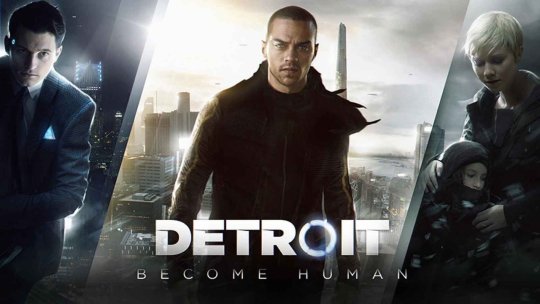
This one was almost a toss between Gris and Detroit, but, in the end, I have to give it to the latter for the sheer amount of work put by Philip Sheppard (Kara), Nima Fakhrara (Connor), and John Paesano (Markus) into crafting three separate and distinct scores that not only feel authentic to each of the characters but are also wonderful to listen to on their own, effectively elevating the source material, something not many titles can boast. If you were to force my hand right now to pick between one of the three, I’d naturally have to go with Philip Sheppard’s score, as his Kara leitmotif was the one that stuck with me the most throughout the game. It’s a simple string composition but the things he does with it, the way he builds upon it, it’s something truly wonderful. It doesn’t hurt that I loved Kara and Alice’s story the most, from an emotional standpoint, and Philip Sheppard’s score plays no small part in this. Having said that, I also have to congratulate Fakhrara’s Connor score, far and wide the one that feels more at home in this sci-fi world, and Paesano’s work in elevating Markus’ character through his music, with great tracks such as “Something You’ve Never Seen Before” or “Markus’ Speech,” to mention a couple. Like last year’s NieR:Automata, Detroit: Become Human’s score is definitely worth a purchase.
Runners-up:
Gris
Forgotton Anne
The Animated Adventures

Of all the games in this list, none fit the category of “family game” better than Ni no Kuni II: Revenant Kingdom. Everything from its bright and colourful art design that could be lifted straight from a Studio Ghibli production at times, imaginative world and characters, and cheerful soundtrack, made this game a delight to play from beginning to end. It was truly refreshing to play such a straightforward and sincere story about a young prince who wishes to unite the world in peace, working together with his mentor and a motley cast of allies from all corners of the world. The story is framed as a series of chapters, with opening slides and even a narrator to close each one, and it follows Prince Evan as he's exiled from his kingdom after a coup, yet finds the strength in his newfound commitment to bring peace unto the entire world. As such, he founds a new kingdom that you get to micromanage throughout the game, building and creating different facilities, undertaking research or crafting new weapons and armour, finding new recipes for your cook, or scouring the world for people keen on becoming the first citizens of your new kingdom. Unless you’re planning on rushing through the main story, kingdom building will take a good deal of your time, as you’re sent on quest after quest to gather ingredients, find missing people, or engage in battle from time to time. To give an example, it took me 37 hours to beat this game and I still had a ton of things to do on my quest log!
As perhaps one would expect from such a kid-friendly game, Ni no Kuni II is surprisingly easy to play, so much so that people actually complained it lacked difficulty levels, which were eventually added in a patch. If I had to criticize it for something, it would have to be for its world map exploration, which looks similar to Worlds of Final Fantasy, a design decision that clashes with the vibrant Ghibli-like art that is prominent throughout. Perhaps it was outsourced to a different studio than Level-5? Also, the amount of side content in this game can get a bit overwhelming and more than a little repetitive, but if my runtime proves anything, it’s that you can engage it at your own leisure (indeed, it takes 90 hours for a completionist run), or not. The game also features a sort of in-world Facebook/Twitter where you can check posts with pictures of events that have transpired, people looking for new jobs or challenges (a nice way to search for citizens), or even examples of the world’s flora and fauna. It’s a nice little feature that makes the world feel a little more alive and reactive than it really is. As for its score, composed by Joe Hisaishi, while it does have great tracks such as “The Curious Boy” (my personal favourite), “Kingmaker’s Theme,” or “Happily Ever After,” not to mention its main theme, and is solid overall (more so than other titles in this list), it’s probably not one I’ll often find myself listening to, which is why I didn’t award it with my Best Soundtrack award.
All in all, Ni no Kuni II: Revenant Kingdom is a title I’d heartily recommend to anyone who wants to experience a charming and colourful bedtime story in a little country a long, long way from here...
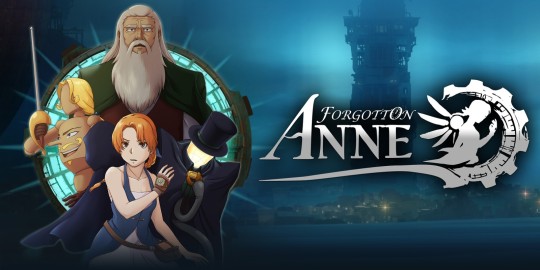
Developed by ThroughLine Studios and released by Square Enix earlier in May, this game wasn’t even on my radar, but, like Ni no Kuni II, Forgotton Anne is a game brimming with imagination, that pleasantly surprised me with its great voice acting and soundtrack. Unlike Ni no Kuni II however, the game maintains its beautiful, hand-crafted, aesthetic throughout, making you the protagonist of an animated adventure with high production values, as you take on the role of Anne, a human tasked with enforcing the law in a world of forgotten objects turned sentient, called Forgotlings. When a group of rebel Forgotlings strike a power plant, Anne will have to track down the mysterious rebel leader and uncover the truth about herself and this world. Forgotton Anne is a game that allows you to roleplay a ruthless Enforcer as well as one that prefers more peaceful means of resolving conflict and these decisions are acknowledged throughout the game. Equipped with the Arca, a glove that allows you to manipulate anima (or soul energy), Anne will often be presented the choice of 'distilling' Forgotlings or sparing them, opening or closing certain doors for you.
The game plays as a platformer with puzzles that revolve around your use of the Arca to open doors, power up consoles, etc. These are not terribly difficult but you may find one or two that leave you scratching your head for a bit. Exploration is encouraged by way of collectibles and, in fact, a feature is introduced at the end of the game that allows you to travel back in time and replay certain levels in order to track down memorabilia and unlock achievements. It's a neat way of allowing replayability while in the context of the story and it gets extra marks from me for the additional effort.
While the story is largely predictable, it's by no means any less good for it and was, to my mind, perfectly executed. One lingering issue I have, nonetheless, is how the game makes a reveal halfway through, believing it'll have more impact than it actually did as I'd already been playing under the basis this was true. Perhaps they should've made more of an effort to hide it in the beginning. Then again, maybe that would've drawn more attention to it. Another issue I had storywise has to do with how underdeveloped, and slightly contradictory, I felt one of the endings was. It's a feeling I also had when playing the original Life is Strange and realizing how much more effort was put into of the endings as opposed to the other.
When all is said and done, Forgotton Anne is a charming animated adventure that will undoubtedly pull at your heart strings, but also make you smile merely for being allowed to partake in this world of ill-tempered teddy bears, trigger-happy guns, and Shakespearean mannequins, and it’s a definite recommendation.
Lara’s Final Chapter

Shadow of the Tomb Raider delivered almost everything I wanted from a new entry in the Tomb Raider series, but not all I would’ve expected from Lara’s final chapter. Together with her friend Jonah, Lara must stop Trinity from finding an ancient artifact in South America that has the power to reshape the world. However, in her rush to beat Trinity to the finish line, Lara may have inadvertedly set in motion a series of events that threaten to trigger an apocalypse. As a result, Shadow of the Tomb Raider turns out to be a darker game than its predecessors, a fact highlighted at several points throughout the game, but never sufficiently explored, though I give it credit for acknowledging it. Sadly, while Shadow tries to tie together the Trinity storyline from Rise, we learn very little in terms of the composition and overall goals of this shadowy organization, that is now practically reduced to providing cannon fodder for our favourite Croft. The main villain is a little more nuanced and sympathetic than previous ones, and for once the series doesn’t tie your hands behind your back during the final boss fight. Unfortunately for the game, I was more invested in fighting his lieutenant, who gets killed in a cutscene.
In terms of gameplay, Shadow doubles down on tomb raiding, adding underground and underwater exploration, but one can’t help but feel its maps are more constrained than in Rise, favouring the Uncharted series’ more linear approach, particularly when it comes to the game’s combat sections, which feel more scripted than ever before. Perhaps by way of compensation, the game introduces a new stealth mechanic that allows Lara to camouflage herself, thus getting insanely close to her enemies, and the ability to hang enemies from tree tops a la Arkham series. The crafting system now allows you to harvest insects to craft poison grenades or special arrows that turn your enemies against each other, though, regrettably, these are introduced rather late in the game. Weapon customization also makes a comeback as does Lara's ever-increasing wardrobe. Shadow also tries something new by introducing side quests, but thankfully never so many as to feel burdensome.
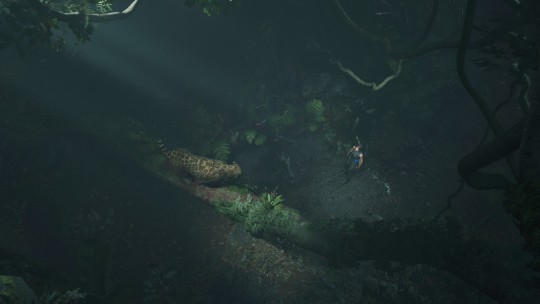
This game looks pretty to boot too.
The music is mostly unremarkable, working to great effect immersing you in the setting and building on the game’s atmosphere, as I’m sure was Brian D’Oliveira’s intention, but there's nothing that'll stick with you after you're done tomb raiding your way to the end. The pieces that stood out to me the most are “Lara's Dream” and the end credits song, “Goodbye Paititi,” but that’s about it. This might partially explain why Lara’s final chapter lacks emotional resonance; a lot of the emphasis is placed on the action, few, if any, leitmotifs or themes are introduced, with (maybe) only the main theme carried over from previous games. It would be wrong to lay the blame entirely at Shadow’s feet when the first game didn’t establish a musical narrative beyond Lara’s theme though. I don't recall a Jonah theme or a Trinity theme, for instance. Perhaps if the series had maintained a coherent musical narrative with its score the story beats would've been more impactful.
Our story ends in an uneventful note that I feel doesn’t do the series justice. It’s not a bad ending, but it doesn’t pack the same punch as, say, Uncharted 4 did. In a way, this is a curse of its own making, as the Tomb Raider series is tonally different from Uncharted; and whereas the strength of the latter rests in Nate’s interactions with his friends and family, Lara has always been terribly isolated in these games, Jonah notwithstanding. Thus, while not exactly the swan song our tomb raider deserves, if you played the previous two games, Shadow of the Tomb Raider is definitely not one to miss.
Best Side Content
I don’t think any other game I’ve played this year has come close to making its world come alive nearly as much as this game did. With plenty of side quests and side activities, it would be easy to make them seem like busy work, but this game somehow manages to turn them into events the player can look forward to, building the world these characters live in, making it feel real. Some are so entertaining that I found myself delaying the main campaign so I could play more of them. No game released this year did this better than...
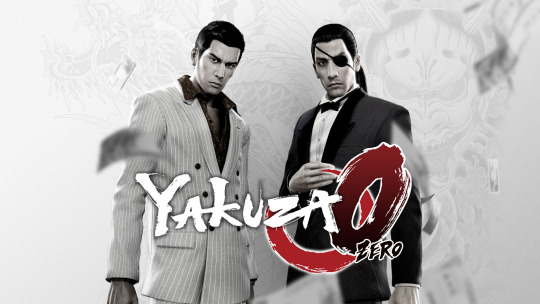
While the game shows some signs of its age (it was originally released in 2015 in Japan), what it lacks in visuals it more than makes up packing its world full of fun things to do. Do you want to go out for drinks and do some karaoke? You can do that. How about some batting practice? You can do that too. Dinner? Sure. Car racing? You bet. Can I rock the dance floor? Like freaking Travolta. You can even play games at your nearest SEGA arcade, bet big on an underground fight ring (there are two), get into real estate or manage your cabaret club, by far the mini-game I had most fun with. The amount of detail put into some of these mini-games is beyond ridiculous and would definitely justify having a game of their own. Beyond these activities, you also get to meet a lot of interesting NPCs that have their own unique stories to tell and that you always feel glad to have helped at the end of the day. You can help a mother rescue her daughter from a cult, have the Chinese mafia fake a ring for a guy’s girlfriend, teach a dominatrix how to be better at her job, or even share your stories with a radio programme to win a prize, to mention a bare few. You can also have a few laughs at how bad Majima is tailing people and trying to hide from them.
Yakuza 0 is an example of side content done right, that foregoes the modern-day open-world formula, opting for a more constrained setting a la Deus Ex: Human Revolution, but that feels big and rich thanks to its content and characters. And on that note, let’s give it up for Judgement Kazzy!
Runners-up:
God of War
Ni no Kuni II: Revenant Kingdom
youtube
Assassins No More
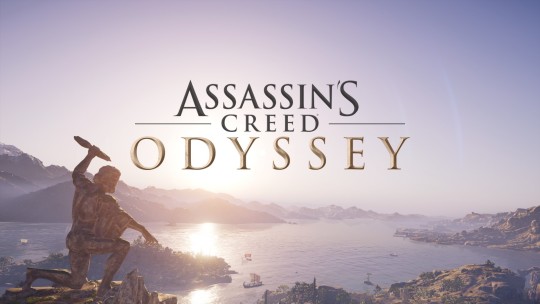
Last year, Origins made it into my list through sheer spectacle, the lure of exploring Ancient Egypt, and the promise of a return to the modern storyline of the Isu with the introduction of a new set protagonist, Layla Hassan. This year, Odyssey ups the ante by delivering a story that, while still revolving around a family drama, no longer makes revenge the driving force of the narrative. Indeed, for a good chunk of the game, our character’s motivation (Kassandra, in my case) is a blend of making a living as a mercenary and exploring the world beyond her small island of Kephallonia. Given how beautiful and colourful the world in Odyssey is, I’d say it was a smart choice. The game also introduces more interesting side quests than its predecessor did, and better tied to the main campaign, with one of my favourites being the Silver Islands arc; perhaps in no small part thanks to how cute the rebel leader, Kyra, is. In fact, Kassandra can romance a TON of people as she explores the world and runs errands, but, sadly, no relationship is as well crafted as, say, your relationship with Triss or Yennefer in The Witcher 3. Some might come close to being as impactful, such as your relationship with Daphnae, one of the Daughters of Artemis, but they’re all mostly just one-night stands, with one particular relationship coming out of the blue as the game ends that I wished the game had set up and built further.
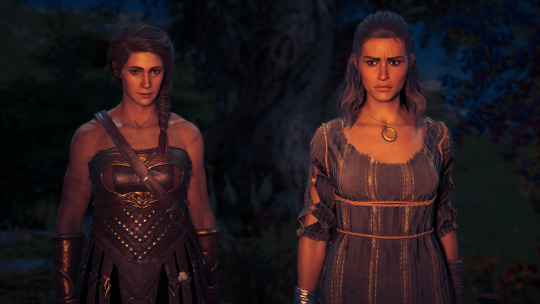
I know I said cute, but hot works too.
Gameplay-wise, Odyssey plays very much like Origins, with a more streamlined crafing system, that requires less variety (but still tons) of resources to upgrade your gear, but with blocking gone after the shield was removed, an odd design choice. You still get to level up your character, though the leveling-up curve is rather steep at the beginning, forcing you to play much of the side content that would qualify under busy work. It doesn’t help that the in-game store sells a Permanent XP booster that gives you an additional 50% XP for $10, as well as materiales to upgrade your gear, and has the balls to outright call them “Time Savers.” Ubisoft further pushes the in-game store and Helix credits by introducing a new currency in-game, necessary to buy crates with random legendary gear drops from a special vendor, that you get at a much slower rate than your usual credits. I’m not too mad about this, given that the game does reward you with some great-looking armours through normal playthrough, but it’s something we should be on the lookout for future titles.
Naval battles make a return and, simple as they are, I welcomed the distraction and opportunity to sail the Aegean Sea and discover new locations and secrets. At times, Odyssey manages to replicate the sense of wonder and mystery I experienced when playing Skyrim. On the other hand, Conquest battles, its newest addition to the franchise, fail to live up to the expectation. Beyond their limited scope, the worst sin they commit is how inconsequential they are, having no impact in the world around you beyond what banner the closest fort will fly. Curiously, these battles are missing from the main story's end content, what seems odd considering they would've been a perfect fit for the story. In fact, there's a stark contrast between Chapters 1-7 and 8-10, with the latter chapters moving at a brisk pace that is not necessarily justified. On the plus side, Ubisoft has seemingly embraced the Isu civilization, what has allowed them to include mythical creatures like the Minotaur or Medusa, and even throw in Atlantis for good measure. I only hope they’ll go the extra mile and throw in some Greek Gods as well.
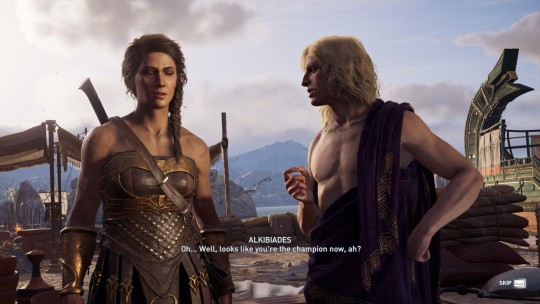
The game has some well-placed humour as well.
For all the things it does better than Origins however, I feel Odyssey takes a few steps back, especially insofar the modern-day storyline is concerned. While Layla Hassan makes a comeback, her story is so short and uneventful that it comes across as an afterthought, jumping ahead in time and introducing a whole host of new characters we have never met and referencing events we know nothing about. Layla herself experiences a radical transformation from being skeptical of the assassins’ intentions to becoming one of their strongest supporters. Nothing about the modern-day storyline makes a lot of sense, with many gaps that are probably filled in with other material such as comics and novels, but I’ve always believed that to be the hallmark of lazy and poor storytelling. Either commit to the modern-day storyline or don’t, Ubisoft, you can’t have it both ways.
Overall, I feel like Odyssey is an improvement over Origins, and that’s why it makes it on the list. I am however, skeptical that Ubisoft will pull it off a third time before the charm and novelty of an open-world Assassin’s Creed game wears off -it already is thanks in no small part to its side content-, or before they push the Helix Store so hard down our throats that they have their own Battlefront 2 controversy. Perhaps they still have a shot with a game set in Japan or China. Only time will tell.
My favourite game of 2018
This wasn’t a particularly easy choice to make considering the different strengths and weaknesses of the games in this list, not to mention their different approaches to storytelling. Assassin’s Creed: Odyssey is a strong contender, but its world is so filled with busy work, its modern-day story so underdeveloped, and the push of the Helix Store so blatant, that I cannot in good conscience say this was my favourite game of 2018, let alone GOTY. Likewise, Shadow of the Tomb Raider was initially well-positioned in my mind to take it home, but it just didn’t stick the landing for what it’s supposed to be (but hopefully isn’t) Lara’s final chapter. Another single-player action-adventure title, God of War, gets almost everything right, but I couldn’t connect with the story of Kratos and Atreus in the same way I did, say, Kara and Alice in Detroit: Become Human. I could go on knocking out competitors, but I’d rather talk about my favourite game released in 2018...
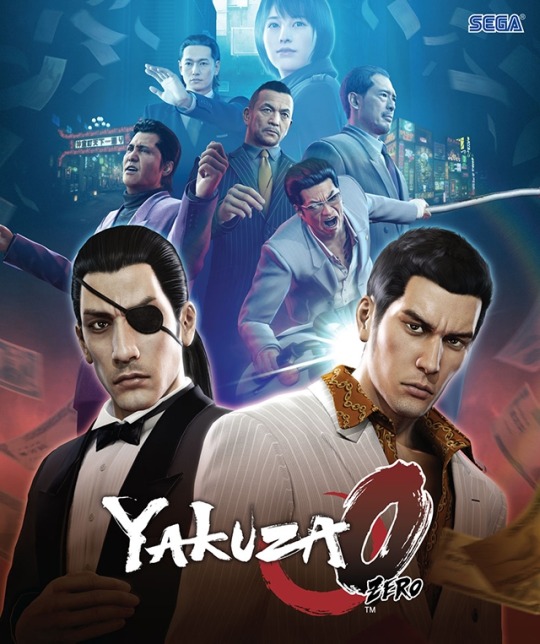
Yakuza 0 is not a perfect game, but it gets pretty close at times. Set in the 80s, Yakuza 0 follows the characters of Kazuma Kiryu and Goro Majima, two rookie Yakuza who, for different reasons, have fallen in disfavour with their respective families, and need to figure out whether they have what it takes to return to the fold. That’s about as much as I can reveal without talking spoilers. No story in any of the games I played this year gripped me nearly as much as this one did (some moments in Detroit: Become Human come close), not only because of how well-written the characters are across the board (including the villains who come across as fearsome opponents), but also because of its many twists and turns that will keep you guessing what the real goal of the different players you find yourself involved with is. Your character, be it Kiryu or Majima, and his understanding of events by the game’s end, is radically different from his starting point, as you unveil plots within plots within plots, a result of the many and varied agendas at play here. To say this game has as many layers as an onion would be high praise... for the onion. Both Kiryu and Majima are powerful characters in their own right when fighting thugs, as demonstrable by the gameplay, but Yakuza 0 is quite ruthless in showing you exactly how out of their depth they are when they decide to take on... bigger opponents. You would think this is because Kiryu and Majima get beat up, and they do, a lot, but I actually found it’s the conversations they have with other characters, the villains in particular, that’s the highlight of the game. Yes, characters in Yakuza 0 talk, a lot, so you’d better get used to it, but these conversations, excellently voice-acted, fill the atmosphere with so much tension, dread, or sometimes anticipation, that you can’t help but be absorbed by them, as you can never guess what the other party might say that will surprise you. And this game surprised me a lot.
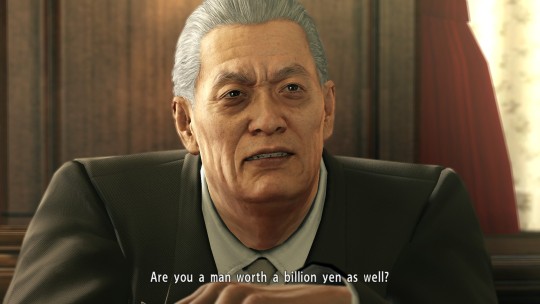
Man, the conversations in this game...
Having said that, it is true many of the twists and turns that were a surprise in the beginning started to feel a bit trite when they’re re-used in the final chapters. One that annoyed me in particular was the game’s use of the “Your Princess is in Another Castle” trope (incidentally, God of War also does this to some extent), sometimes forcing events a little much to pull it off. I suppose this has to do with the fact that this “Princess” becomes the sole motivation for your two characters towards the end, getting shuffled around so both Kiryu and Majima can get a crack at the villains. It works thanks to the strength of the characters and their dialogue, but I would certainly take issue with a lesser game that kept me running around the place for 4 or 5 chapters straight. I also felt that, of the two leads, Kiryu’s ending is the one that feels more natural to his character, as opposed to Majima’s, who experiences an odd personality shift that doesn’t seem to jibe with what we know of him. It’s possible this has to do with the fact that, while Yakuza 0 is the starting point in the series for our two protagonists, it’s not the first game in the series. As a matter of fact, there were 5 Yakuza games, released over the space of 10 years, prior to Yakuza 0.
Having previously awarded it with my “Best Side Content” award and praising it for its world-building, despite not being an open-world game (yes, you can have invisible walls and still make a great game!), Yakuza 0 only needed to deliver on its story and characters, and it did that in spades.
And that’s it for my list of the best games I played in 2018! It’s a bit of a long read, for sure, but I could hardly have done these games justice had I written less, and in some cases I probably didn’t write enough. What about you? What are some of the best games you played in 2018?
#best games of 2018#gaming#gris#detroit become human#god of war#spider-man#ni no kuni 2#forgotton anne#lara croft#shadow of the tomb raider#assassin's creed#assassin's creed odyssey#yakuza#yakuza 0
0 notes
Text
Team Sonic Racing – Review
One of my favourite things in gaming is the subliminal rivalries between protagonists. Sam Fisher has Solid Snake, Duke Nukem has Serious Sam, Nathan Drake has Lara Croft, and of course, Sonic has Mario. While they start off as a product of fandom, I like how these little feuds inevitably trickle down to a developmental level. Because whenever studios start competing, you just know someone will end up with a great game.
I therefore think Sonic has every right to star in a racing game even if ‘The Blue Blur’ could probably outrun all the karts and then some. To me, a Sonic kart racer is a salute towards the long-standing duel between Sega and Nintendo trying to one up each other. While other kart games tend to feel like a knock-off of Mario Kart, the attempts by Sega somehow always felt more like a proper challenge.
That moment when your game is just as good as Mario’s
The PC has criminally slim pickings when it comes to the selection of decent kart games at our disposal, and Team Sonic Racing represents a good choice. All the strengths that Nintendo fans have been enjoying for years can be found right here. However, I was confused by several decisions made by Sumo Digital in the aftermath of their previous game, Sonic & All-Stars Racing Transformed. When compared with its prequel, certain aspects of Team Sonic Racing just feel like a step backwards.
Sub Sonic
This is still a great Sonic racing entry, so let’s get the nasty stuff out of the way starting with this game’s biggest let-down: The plot. Indeed, here we have a kart racer where someone actually deemed it necessary to shoehorn a story into the career campaign. I have probably driven virtual karts almost as much as my actual car, and I have never felt like the experience would be enhanced by, or even needed, a story.
Perhaps this is his biggest rival.
The narrative plays out within cut scenes between races, where characters speak to each other in a speech bubble, JRPG-style. Basically, a tanuki named Dodon Pa holds a huge racing tournament for the friends and foes of Sonic. He need to examine how well groups can race together so that he can develop an engine that runs on the power of… teamwork.
That’s right, teamwork. As a surprise to no one, Doctor Robotnik/Eggman joins in on the action with the ultimate goal of stealing this extraordinary new engine. It’s up to Sonic to protect his friends, and thwart the plans of the rotund, mad scientist. Again. Though, I have no idea why Doctor Eggman wants this engine so bad because he hasn’t got friends anyway.
Not the worst example, but it is all downhill from here.
I can usually turn a deaf ear towards the cheesy dialogue in Sonic games, but the exchanges in Team Sonic Racing’s story are on the level of an explosion in a cheddar store. Which nine-year-old was tasked with writing their lines? It becomes utterly cringe-worthy at times, and this represents the final nail in a coffin for a story that should not have been told in the first place. Nothing beats a good old career mode, and I have never been this grateful for a skip button.
A prickle of hedgehogs
Despite the story made a flub out of introducing the notion of teamwork, Sonic Team Racing’s main selling point is that you can race both against and with other people on the track. Whether it be couch co-op or online, the emphasis here is racing as your only little squad in a style that reminded me a lot of Need for Speed: Carbon.
What you can therefore expect is a lot of slip-streaming, helpful shunts as well as sharing items with your team all so that your overall positions can contribute to the win. It really does not matter who crosses the finish line first since the game assigns a consistent score to each place. This was a nice feature since I found other team-based, racing games still emotionally blackmail you, player 1, to cross the line before anyone else.
Drive in the yellow trail for an extra speed boost!
This makes for an interesting dynamic not just in terms of how the game plays, but also how Sumo Digital could make one vehicle type actually feel completely different from the next. As I mentioned, karts leave behind a yellow trail for the team to slipstream in, and if anyone missed the item collection points you can toss them a rocket or a boost power-up. Players can also shunt, or be shunted by, their mates back into the race at full speed if they spin out.
Also encouraging the notion of working together is that your squad of three always consists of three different kart types. The technique cart types, driven by characters such as Tails or Silver, drift just a tad more easily around the corner, while the speed type cars of Sonic and Amy have a higher top speed. The power type vehicles of Knuckles and Big are a bit more sluggish, but they are far less affected by knocks and rough terrain.
His car is actually pretty solid on the track
You can really tell the difference between them, and each type of kart encourages a slightly different play style. Players that really want to dominate the competition in a tactful way should combine the strengths of their carts, and thankfully the AI make excellent racing partners.
Further encouraging the notion of team work is of course the Team Ultimate power-up. Like the All-Star ability in the previous game, this power-up grants you a substantial boost in speed and invulnerability. The only way to obtain this beauty is by doing all the team based activities I mentioned above. Nevertheless, let me reassure those more inclined towards playing solo that Team Sonic Racing offers every race mode in both team and single-player options.
One step forward and two steps back
It was surprisingly good relationship therapy for me and my girlfriend to play in cooperation with each other in a kart game for once, but I do miss the transformation aspect of Sonic & All-Stars Racing Transformed. The tracks felt far more vertical and dynamic with this mechanic, and considering that Mario Kart 8 has also jumped on the anti-gravity bandwagon, I have to wonder why it was omitted in the latest Sonic kart racing game. It gives Team Sonic Racing a slightly dated feeling akin to older kart games.
I also have misgivings about using wisps (remember Sonic Colours?) to symbolise power ups since it took some memorisation to learn their purpose. For example, you pick up a white wisp, but what does it mean? Is it a projectile? No it’s a boost. Okay now a blue one. Is it a shield? Nah it’s a block. Not a major issue since you instinctively remember their functions eventually, but I should note they failed to contribute to the gameplay as much as I hoped. In general, the power-ups feel a little ineffectual, and I gave mine to my team mates most of the time.
Drive through the red arch for a score multiplier, drive through the yellow for score. Do you have any idea how hard this is????
At least I can tell that Team Sonic Racing really wants me to feel rewarded in my driving skill. Rewards become substantially more generous at higher levels, but there are also single player events designed to train the player. These races are time trials in things like drifting while collecting rings, or a particular favourite of mine where you must dodge through little robots to learn evasive driving.
They are superb little distractions to sharpen your edge on the competition, but I must say that the requirements for gold medal, heck even for silver medal, are a little steep. I am the laziest achievement hunter in the world, but at one point in the career I needed a silver medal to unlock the next set of races. Not cool.
Kart racing delight
Team Sonic Racing fell short in a few areas for me mainly because I feel like Sumo Digital was really giving Mario Kart a serious run for their money at one point. Don’t get me wrong, I really love Nintendo. I just feel like this game made unnecessary sacrifices for the sake of the whole team racing dynamic, and I think Sumo Digital would be wise to reintroduce them in coming titles.
As it stands, I can still see myself returning over and over again to Team Sonic Racing for the rest of this year at least because there is still tons of sweet kart mods to unlock, and so many gold and platinum medals keeping me awake at night. This is an essential game for Sonic fans, and a lovely quantum of solace for the kart lovers that feel like their first choices are growing a bit long in the tooth.
Number of tracks
Vehicles feel unique
Selection of characters
Kart customisation
Soundtrack
Inconsistent difficulty spikes
Awful story
Ignores strengths from previous game
Play time: About 14 hours total. Single player campaign around 12 hours.
Computer Specs: Windows 10 64-bit computer using Nvidia GTX 1070, i5 4690K CPU, 16GB RAM – Played using an Xbox One controller
Team Sonic Racing – Review published first on https://touchgen.tumblr.com/
0 notes
Text
Title Fast Striker Developer NG:Dev.Team Publisher(s) EastAsiaSoft (PSN)
NG:Dev.Team (MVS,Dreamcast,iOS) Release Date(s) October 16, 2018 (PSN)
December 28, 2010 (Dreamcast)
June 30, 2010 (MVS) Genre Arcade SHMUP Platform(s) PSN (PS4/Vita), Neo Geo MVS, Dreamcast, iOS Age Rating E for Everyone Official Website
When it comes to arcade shoot ’em ups, the only titles that continue to draw crowds and leave a lasting impression are those that try something different. I’m referring to SHMUPs that possess that unique twist on traditional gameplay, include special power-ups or weapons, or have an enthralling art-style. For example, names like R-Type, Gradius, or Radiant Silvergun are still remembered fondly to this day. When I launched Fast Striker for the first time on my Vita, I went in with the intention of finding one of those unique elements to talk about.
I first came across Fast Striker while perusing the catalog of physical PS Vita games on PlayAsia’s website. At the time, I was amused by the fact that the physical version of this game is exclusive to the site. Even more amusing, I found that the game was initially developed for the Neo Geo MVS and ported to the Sega Dreamcast soon after. This PSN release is another port of the title, now for modern consoles. Having said all that, I initially skipped over it because it didn’t really stand out to me. Now that I’ve had a chance to play it myself (both on the Vita and on PS4), I can say that my opinion remains largely the same. But before you ignore it outright, allow me to elaborate a bit further.At its core, Fast Striker is a very competent SHMUP. Throughout my time playing, I didn’t notice any glaring issues with the hit detection, the controls, or really any aspect of the gameplay. If you’ve ever played a vertical-scrolling spaceship shooter before, controlling your ship in this game should come quite naturally. The hit-detection seems to be more or less forgiving depending on which difficulty you choose. The controls allow for either D-pad or left analog stick movement, though my personal preference was to use the analog stick. You are able to shoot in multiple bursts, solid beams, or charge your shields and ram your ship into enemies. This last option is nice, but limited to just a few uses per level.
In terms of sound design, the developers chose to go with a nice selection of upbeat trance music. The tracks will vary by level and boss-battle, though no particular track stands out as overly distinct from the rest. The sound-effects are fair enough, though some of them are a bit strange. There is one “enemy” who occasionally shows up and makes a sound that I can only describe as a child sighing. I put enemy in quotes because this particular enemy doesn’t attack you and is essentially just cannon fodder to obtain a shield power-up.The art design and animations are where this game excels the most. The enemy sprites range from decent to really impressive. The smaller, less-than-challenging enemies are fairly basic in their design while larger, more formidable foes are a lot more detailed. The bosses which appear at the end of each level are particularly elaborate and often have multiple forms. Animation-wise, everything runs smoothly, with no noticeable lag (even on the Vita). You would expect as much from a fast-paced game like this, but it is nice to see nonetheless. Some of the larger enemies scale in from the background to the foreground quite gracefully. While most of the game’s images are displayed using sprites, the background has a distinctly CG look to it which makes it really stand out (in a good way). There is also some nice parallax scrolling between the background and midground layers which I found quite appealing. Believe me, these screenshots really don’t convey how nice everything looks.
Now that we’ve talked art design, I’d like to highlight some of the graphical tweaks that can be made in the settings. First and foremost, you can choose between two preset aspect ratio options: 1×1 and full vertical scale. You can also adjust the X and Y dimensions independently, but I found no practical reason to do so. The best option is to use the 1×1 ratio, as this offers the sharpest image. Having said that, using this option on the Vita makes the on-screen image a bit too small for my tastes. No matter which preset option you choose, I found that playing this on the Vita was a bit straining on the eyes. The full vertical scale option uses a bit more of the screen, but the sprites don’t seem as detailed and I found that to be somewhat disappointing. If you play this on a proper TV using a PSTV or PS4, I would definitely keep full vertical scale off.Another graphics option that I’m sure many will appreciate is the inclusion of scanlines. Love them or hate them, many people (myself included) appreciate the look and feel of scanlines when playing games that use sprites. What’s nice about the scanlines option is that you can adjust the intensity of the lines to meet your needs. I prefer not to use really dark lines as they tend to darken the overall image. On the other end, using lines that are barely visible defeats the purpose. Having the option to fine tune the intensity of these lines is a big positive for me.
I’ve highlighted some of the nicer aspects of this title, so let’s shift gears and talk about some of the downsides. The first of these is the issue of power-ups. Often seen as a staple for these types of games, I can’t say that this one includes many power-ups. You can obtain a single item to charge your shields, you can collect items that increase your score, but your weapons are completely immutable (unless you switch modes). I didn’t expect this game to blatantly rip-off Gradius, but having some form of power-up or weapon upgrade system would have been a nice addition. Changing difficulty modes adds additional weapon abilities (e.g. solid beams of energy in addition to standard bullets), but the weapons that you start with are the weapons you will end with.Speaking of difficulty, this game has 4 modes: Novice, Original, Maniac, and Omake. Original mode is essentially “easy” while novice is “beginner”. Neither of these modes pose any real challenge, but are a nice way of blowing through levels quickly to grab screenshots and earn trophies. It’s rather interesting that aside from the trophies earned in these two easier modes, all the other, harder trophies are exceptionally rare (few players have earned them). Having said all that, Maniac mode is what I would recommend for most players. This mode is closer to what I’d expect from normal, with just a little more challenge thrown in. Omake mode makes a big leap from the rest. I’d classify it as “very hard”. Both the Maniac and Omake modes add the additional gameplay element of a depleting chain meter. As you destroy enemies without taking damage, your chain counter increases (along with this meter). If you don’t continuously increase this counter, the meter will begin to slowly deplete. After a few seconds of not increasing, the meter will begin to fall rapidly. You can prevent this meter from falling all the way to zero by starting the chain again. While the chain combos are present in all gameplay modes, the meter and it’s tendency to deplete exist only in Maniac and Omake mode. I found this concept to be really neat and it made the harder modes stand out as the more impressive ones.
At the end of the day (having played the game for about 2 weeks (roughly 1-1.5 hr/day), I came back to that initial question that I set out with – What unique element sets this game apart from all the others? The gameplay is pretty standard fare, the music is nice, but unmemorable, and there is no defined story or end goal. The one aspect that did stand out to me was the quality of the animations. I can’t put my finger on why, but the animations used for a lot of the larger enemies, bosses, and even the backgrounds were really impressive to me. Were they game-changing? I wouldn’t go that far, but they definitely impressed me and helped make the game feel somewhat distinct. Fast Striker currently retails for $6.99 on the PSN. Playing on PS4 is a much nicer experience than on the Vita, but this type of game tends to work best when played in shorter bursts or while on the go. If you’re interested in the limited physical editions, PlayAsia still has both PS4 and Vita copies. Given the low price point and overall level of enjoyment that I received, I’d say this one’s still worth a look.
This slideshow requires JavaScript.
[easyreview cat1title=”Overall” cat1detail=”” cat1rating=”3″]
youtube
A review copy was provided by the publisher.
REVIEW: Fast Striker Title Fast Striker Developer NG:Dev.Team Publisher(s) EastAsiaSoft (PSN)
0 notes